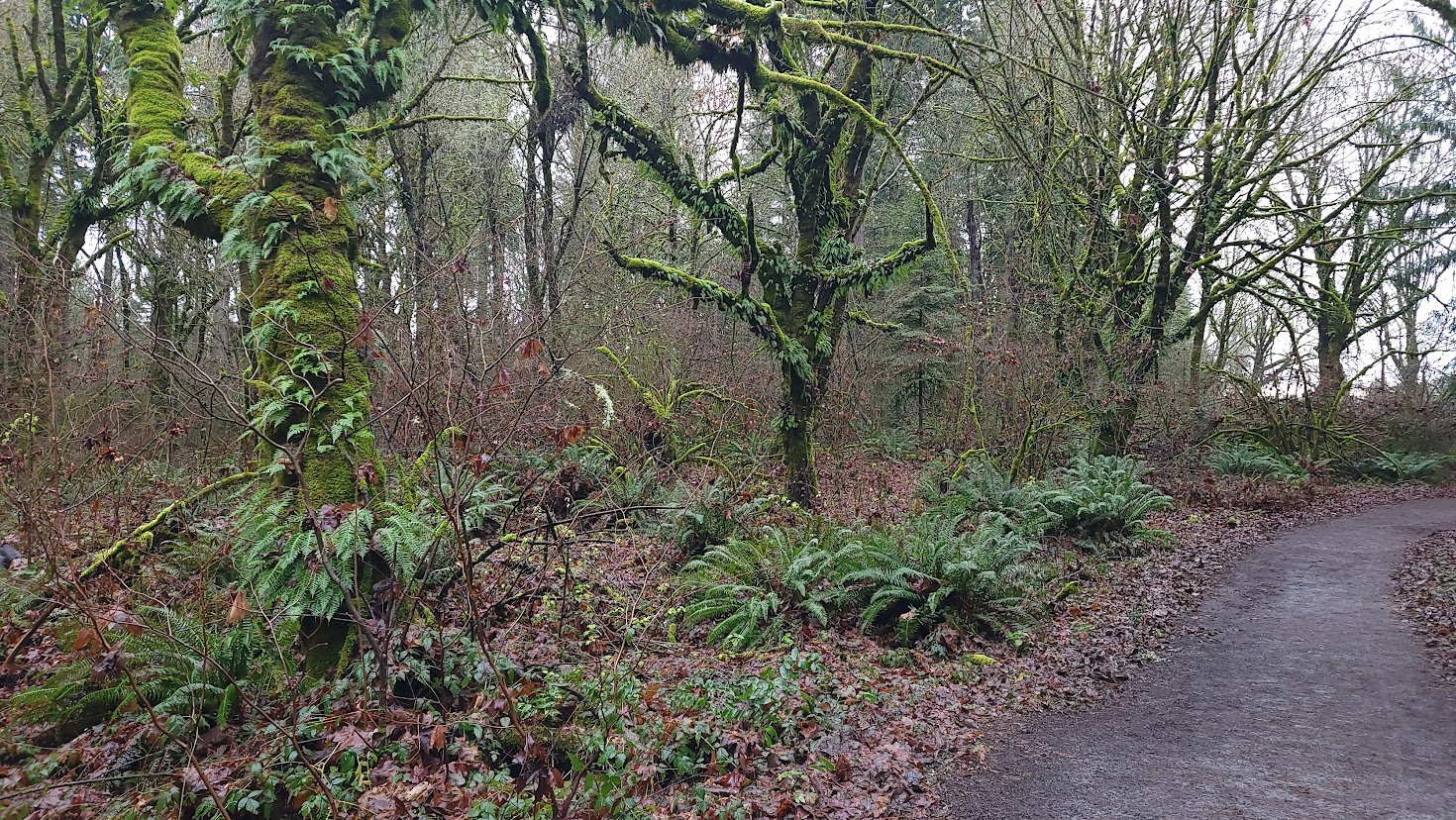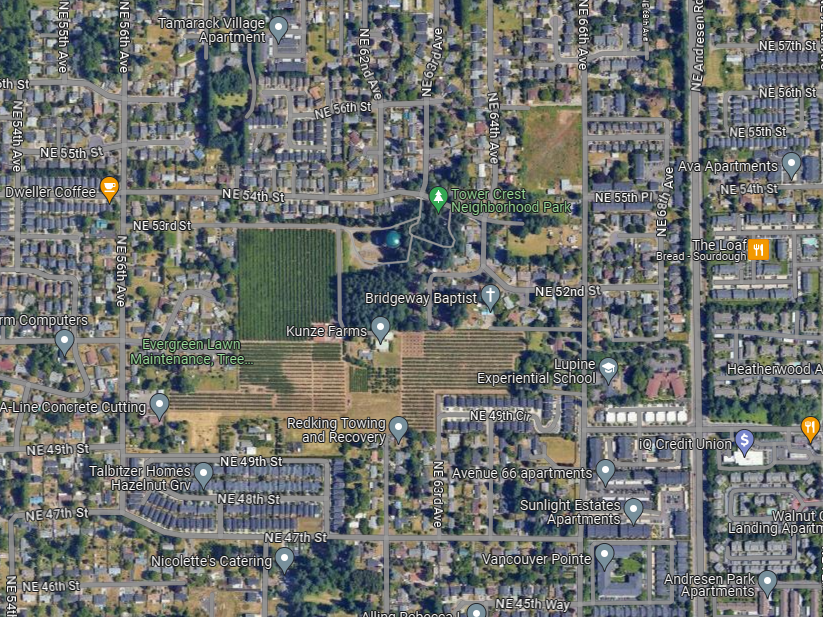Growth Management and Comprehensive Plan Update – December 2023
Turning Long-Range Planning into Current Reality
Over the next 18 months, Clark County will be updating its Comprehensive Plan as required by the Growth Management Act (GMA). Thirty years ago, Clark County engaged residents in its first long-range planning effort. During this time that we are again planning for the future we ask: has the county delivered on the vision of the future residents said they wanted a generation ago?
A Green Future
In May 1993, Clark County put forth its first growth management plan called the “Framework Plan” for managing growth. The county tried to maximize public participation using multiple methods, including conducting phone and written statistically valid surveys, establishing a phone hotline, conducting rounds of public workshops, and conducting two technical workshops.
These workshops and surveys identified six top issues for residents:
- Preserving open space and natural areas;
- Protecting property rights and keeping taxes low;
- Continuing to permit large-lot rural development;
- Encouraging land development that preserves a sense of place and a feeling of community;
- Encouraging development of high capacity transit, including light rail; and
- Developing a better balance of employment opportunities and housing in the county.
County staff then refined the concepts into three different alternative community framework plans, each of which achieved different goals expressed by the public in the first round of meetings. These alternatives were then taken back to county residents for review and selection of a preferred alternative. A majority of the participants preferred the concept of conserving resource lands and natural areas while allowing for the development of a high capacity transit system. This preferred alternative was called the Hometown concept.
Based on this preference, the county worked alongside the cities and prepared a Hometown Community Framework Plan as the long-term vision for community development. Hometown was viewed as the plan that best reflected values from previous public input. The highest rated components included (in priority order):
- Preservation of resource lands;
- Strict design and appearance standards in high density developments;
- Directing rural development to towns;
- Requiring larger lots in rural areas; and
- Directing a larger share of transportation to mass transit.
Approximately 700 people attended the June/July workshops that year and more than 750 written responses were received and tabulated. These comments illustrated that a majority of the participants preferred the concept that conserved resource lands/natural areas and allowed for the development of a high capacity transit system like the “Hometown Plan”. People also had additional comments, including:
- More open space, parks, trails, and to preserve the beauty of Clark County;
- Urban areas should have more dense development (including granny flats, duplexes, condos, and mixed-use development) with large open space as buffers;
- High density should be placed in urban areas and near transportation facilities; that
- Passed over parcels needed to be infilled before allowing new development outside urban areas; and
- Land zoned for industrial uses should increase so that heavy industry would not be spread across the county.

Whipple Creek Regional Park is a great success story of open space preservation in Clark County.
Our Current Reality
So, 30 years after this plan was first proposed, what have subsequent county councilors given us? In large part: suburban sprawl. What we have seen includes:
- Houses have replaced crops on much of our agricultural land. We don’t have an Agricultural Advisory Board despite Clark County having the third largest number of farms in the state;
- We have lost our sense of place and feeling of community, as more and more housing-only subdivisions have been built without being connected to community-building spaces like restaurants, small businesses, libraries, and coffee shops;
- Our farms and forests are at risk of development. The Chelatchie Bluff Mine is proposed for 330 acres of prime forest;
- Parks and park lands are inadequate. And we are losing more natural areas every day as development moves in;
- Our infrastructure is basically the same as it was in 1993, while hundreds of new cars crowd rural roads not designed for such volumes of traffic. Public transit does not reach many areas of the county with urban levels of development. Schools and parks are ever more crowded;
- The new growth does not support itself and property taxes increase every year; and
- Even our climate (heat domes, summer smoke, and drought) has changed for the worse since 1993. The loss of mature trees in Clark County exacerbates the heat island effect, especially in low-income communities.

Kunze Farm surrounded by subdivisions. Kunze Farm finally folded in fall 2023. The 26.38 acres will be subdivided into 309 single-family residential lots with no plan for mixed use. Farms are being squeezed out by development all over Clark County.
The Future that Clark County Residents Said They Wanted 30 years Ago Has Slipped Through Our Fingers
It is time to review and incorporate the vision of the original Community Framework Plan into the 2025 Clark County Comprehensive Plan. The demand for natural, open space is even more urgent, as is the need for tree cover to shade us from increasing summer temperatures. In a country undergoing an epidemic of loneliness, we need community meeting places that reflect hometowns of the past. We need public transit that decreases pollution and emissions, and that makes living in Clark County more affordable during a time of soaring household costs.
It is time to tell our county councilors we want the original 1993 Framework Plan, we don’t believe their buildable land numbers, we reject the idea that more is better, and we appreciate birds and wildlife. Their plan for a crowded, industrialized Portland bedroom community is not our vision. We expect and deserve better.
Give us growth as originally proposed, not something designed to fill developers’ pockets. The county is suffering the death of a thousand cuts as individual wetlands get filled and new houses get built. This is OUR county. We are in charge. We need to let councilors know what we want and not submit to their planning. We do not want ticky-tacky houses scattered all over the landscape. Give us natural areas, open spaces, density in towns, low taxes, good roads, good schools, and a high quality of life.
Submitted by Jim Byrne
